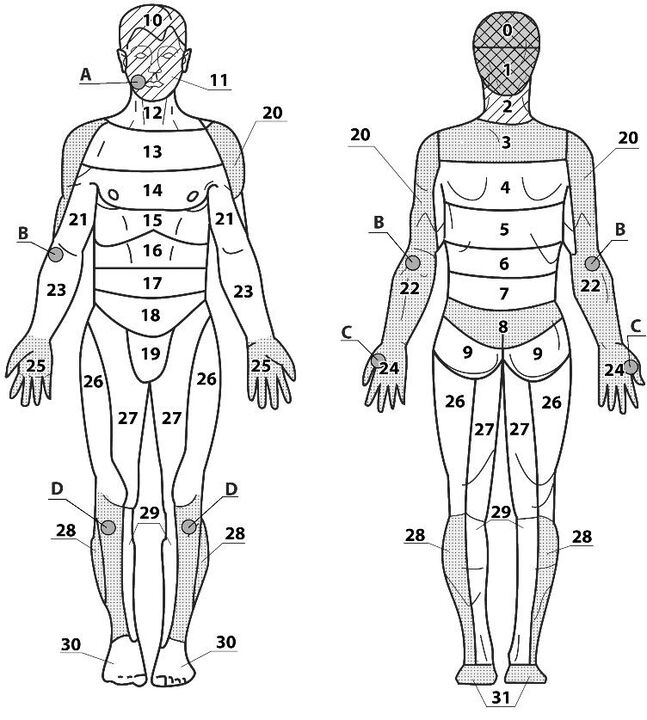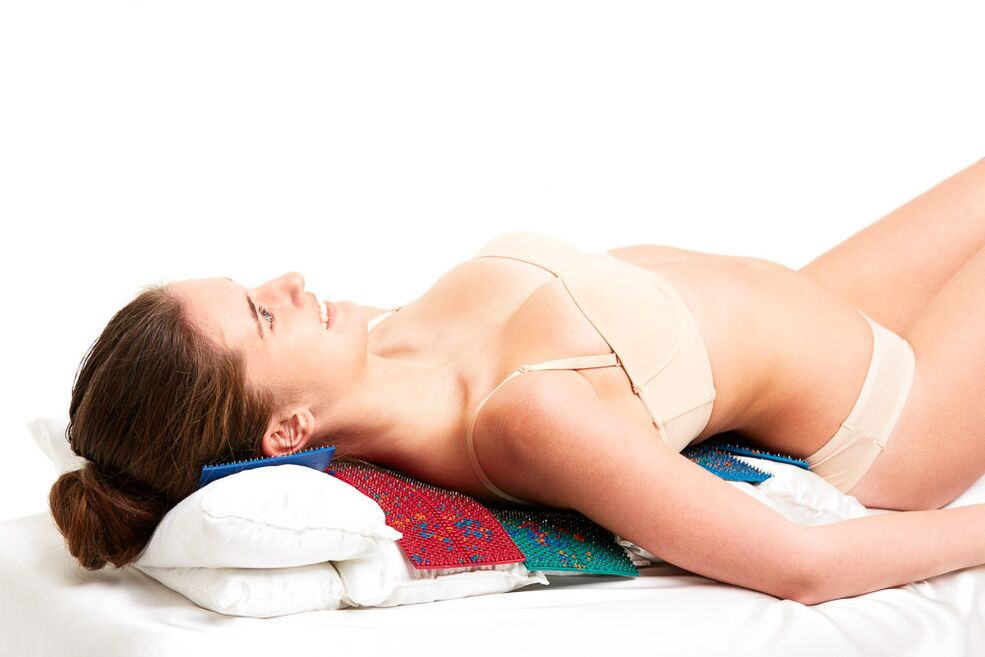Cervical osteochondrosis is a progressive dystrophic-degenerative disease of the intervertebral disc in the 1-7 vertebral region of the cervical spine.
Due to cervical osteochondrosis, the vertebral body is deformed and fatigued, which in turn causes vertebral body damage. This disrupts the normal blood supply and nerve conduction in the neck and the area innervated by the cervical nerve roots.
Cervical osteochondrosis can be isolated or combined with other osteochondrosis (thoracic spine, lumbar spine and sacrum).
reason
Distinguish many factors that lead to the development of osteochondrosis. These include:
- A sedentary lifestyle;
- Sedentary work with static neck load;
- Overweight and underdeveloped body;
- Dysplasia process of connective tissue;
- Circulatory disorders in the neck;
- Neck injury;
- Scoliosis, poor posture, uncomfortable pillows and mattresses;
- Genetic predisposition, metabolic defect.
Symptoms of cervical osteochondrosis. complication
The cervical spine is most prone to osteochondrosis. The vertebrae are the smallest compared with other parts of the spine, the muscle skeleton is not very obvious, and the weight of the head and the upright posture act on the vertebrae. In the cervical spine, the vertebrae fit closely to each other. Even their small changes can cause nerves and blood vessels to be compressed or even displaced.
The most typical symptom complained by patients is cervical pain. Depending on the area affected, the pain can be located: the collarbone and shoulder; the entire cervical spine; on the front surface of the chest.
The first signs of cervical osteochondrosis may be trivial: a feeling of heaviness in the head, headache in the occiput, neck pain at night, numbness or tingling in the shoulders and arms.
The main symptoms
Plant dystonia.
Severe "shooting" pain in the neck, located in the area below the occipital bone. Pain occurs after maintaining a position for a long time, and the neck muscles continue to tense after sleep.
It is difficult to move the hand to one side, and the fingers are stiff and numb. Due to compression of the vertebral artery, neurological manifestations were observed: headache, nausea, dizziness, and unreasonable jumps in blood pressure.
Spine symptoms.
The pain is behind the left breastbone.
This type of pain should be distinguished from angina (angina pectoris, nitroglycerin can be relieved, osteochondrosis is not).
With the gradual destruction of the intervertebral disc structure, they are compressed and the nerve root invasion occurs, as well as the stenosis or invasion of the arteries and veins passing through the vertebral body area.
This leads to the formation of special syndromes-radical and ischemic:
- Failure of the root of the first cervical vertebra (C1): abnormal occipital bone;
- C2 Lesions cause pain in the crown and occipital area;
- C3 lesions will cause neck pain from the affected side, reduced sensitivity of the tongue and sublingual muscles, and speech disorders may occur;
- Damage to C4 and C5 can cause shoulder and clavicle pain, decreased head and neck muscle tone, hiccups, breathing disorders, and heart pain;
- C6 lesions occur most often, from neck to shoulder blade, forearm, thumb pain, skin sensitivity may be affected;
- C7 pathology-Similar symptoms include neck, shoulder, back pain, weakened arm strength, and weakened reflexes.
The circulatory disturbance caused by the compression of the blood vessels of the cervical spine can cause headaches, migraines, dizziness, impaired vision and tinnitus, flickering in front of the eyes, and autonomic dysfunction.
There may be heart symptoms such as angina pectoris, lack of breath, palpitations, and rhythm disturbances.
complication.
A herniated intervertebral disc forms a hernia (protrusion).
A ruptured intervertebral disc compresses nerves and blood vessels and may compress the spinal cord, which can be fatal.
Root disease (radiculopathy), spinous processes are formed on the vertebral body (osteophytes), which manifests as paresis and paralysis.
In the event of the above complaints, it is necessary to contact an orthopedic doctor or neurologist and conduct the necessary research.
Nutrition
Proper nutrition will significantly relieve osteochondrosis. Nutrition should be complete. According to Pefzner, if a person's weight is normal, then as a basis, you can take a therapeutic diet #15. It contains all the necessary minerals as well as more fat and water-soluble vitamins. It is necessary to eat foods rich in natural cartilage protective agents. Chondroitin is found in red fish, animal tendons and cartilage, and chicken.
Be sure to take 1. 5-2 liters of clean water. Liquid is needed to prevent the discs from drying out.
Traditional and non-traditional treatments
treatment
Today, there are traditional and non-traditional methods to treat cervical osteochondrosis.
Medication: Analgesics are used for symptomatic treatment to relieve pain; non-steroidal anti-inflammatory drugs are taken to relieve inflammation and tissue edema; antispasmodics; drugs to improve blood circulation; chondroprotective agents to restore the structure of intervertebral discs.
Shown are vitamin B group therapy, therapeutic topical agents-gels and ointments, creams with anti-inflammatory, warming and analgesic ingredients.
During the worsening period, it is recommended to wear a special collar (Shants collar).
Cervical osteochondrosis combined with intervertebral hernia will affect the sensitivity and blood circulation complications can be treated in time.
The duration of treatment depends on the neglect of the condition, because osteochondrosis is a progressive chronic disease. The treatment time can be very long, and the prevention course can be carried out for a lifetime.
Physiotherapy.
These include exercise therapy, magnetic therapy, balneotherapy, laser therapy, acupuncture, Lyapko applied therapy and massage.
physiotherapy
It is necessary to do exercises to treat cervical osteochondrosis several times a day. They include self-stretching, self-massage, and a set of special exercises. Avoid neck injuries and heavy lifting.
It is necessary to combine long periods of sitting with rest and warm-up.
The foundation of cervical health is a strong and healthy back, physical activity, a comfortable bed, anatomical pillows and mattresses, correct posture and proper nutrition.
Lyapko applied therapy

Application areas:
- Basic 2, 3;
- Additional 1, 4, 12, 13;
- Auxiliary 20, 22, 28, 31.
General advice
When using the applicator, use the main, additional, and maximum pain areas, but in the case of very obvious pain, the applicator should be applied above and below the pain area, or the opposite point and area should be used. Exposure time is 10-30 minutes.

If cervical osteochondrosis is combined with other parts of osteochondrosis-thoracic spine, lumbar spine and sacrum, then the application can be applied to all parts of the spine simultaneously or sequentially. The larger the exposure area, the better the effect.















































